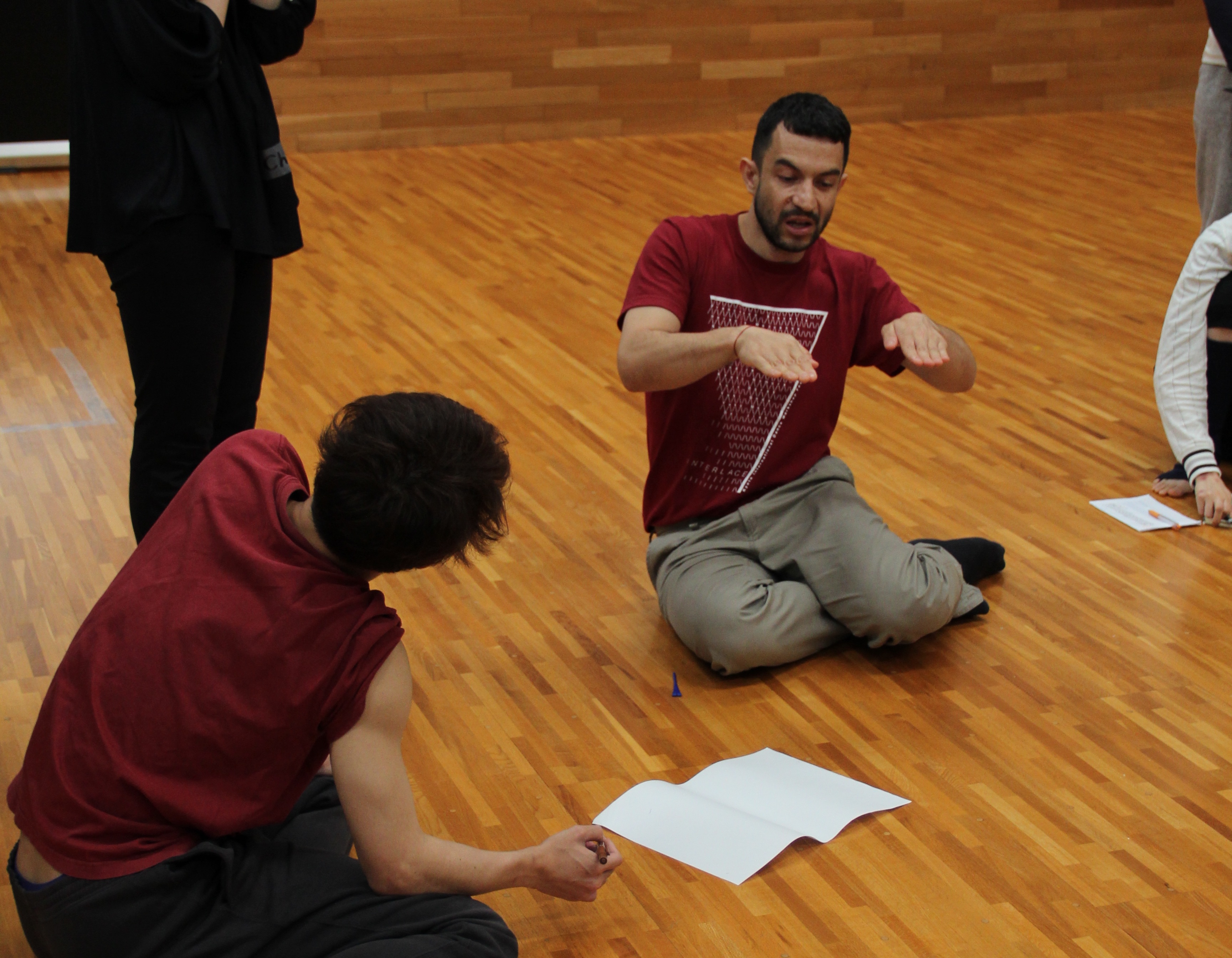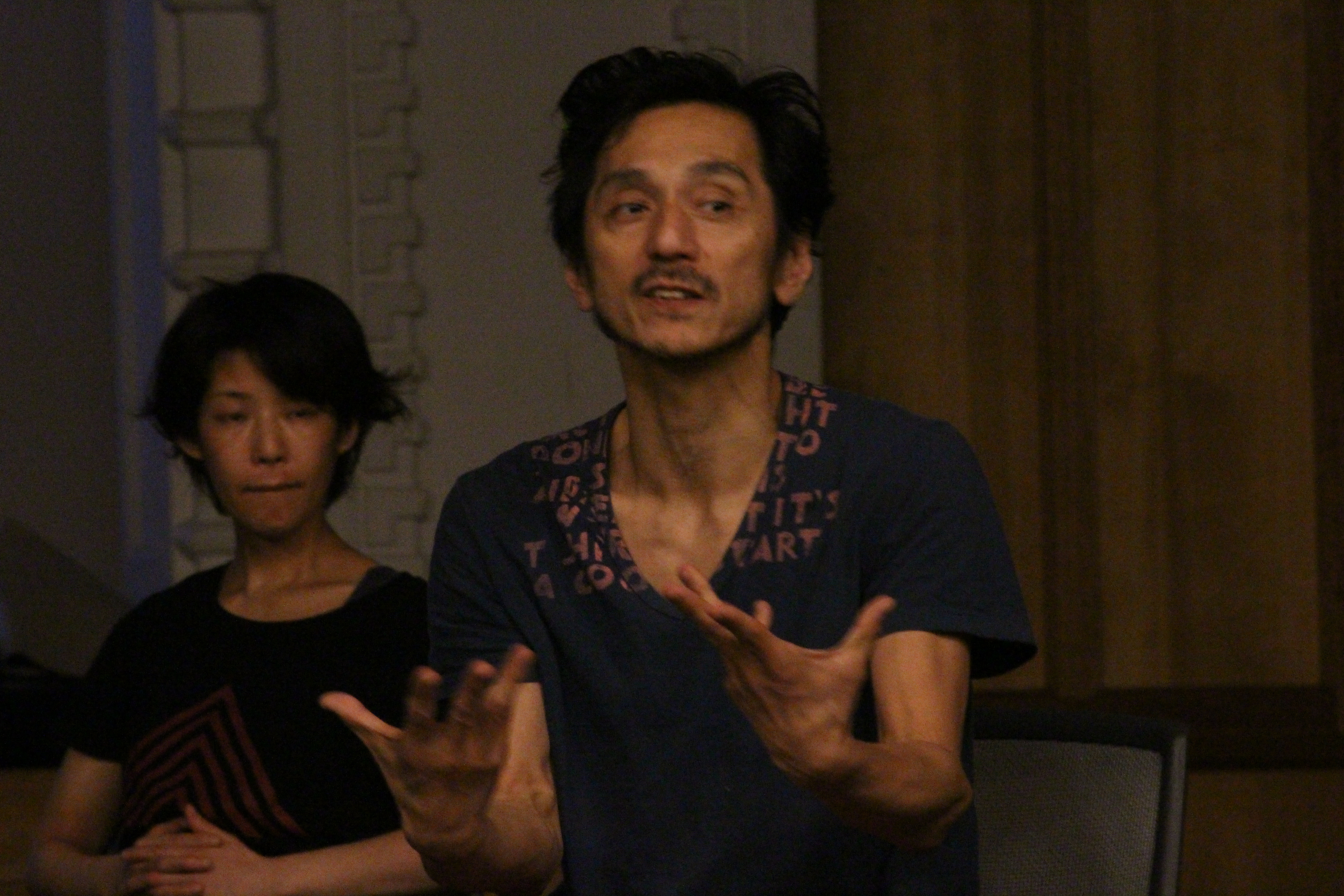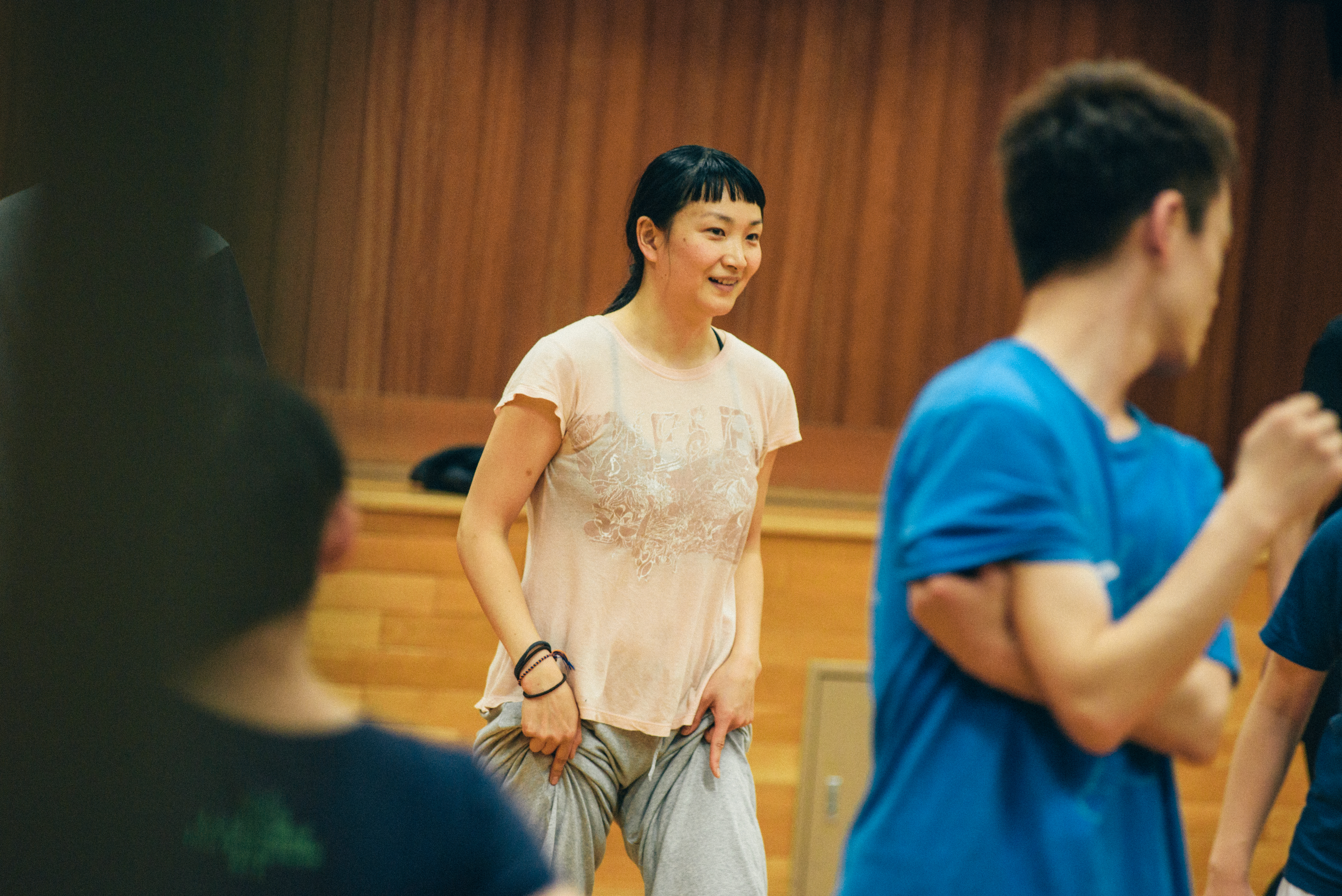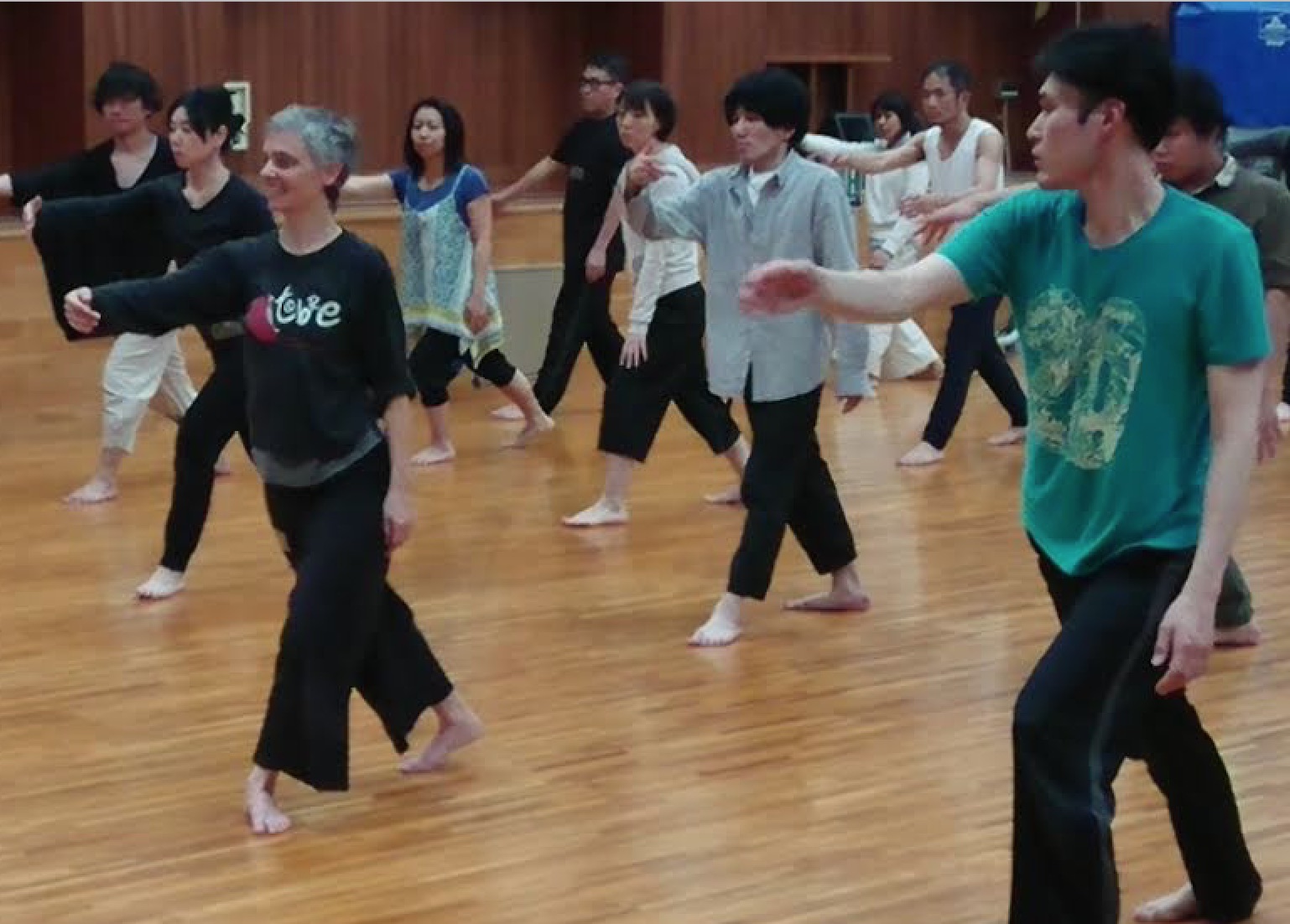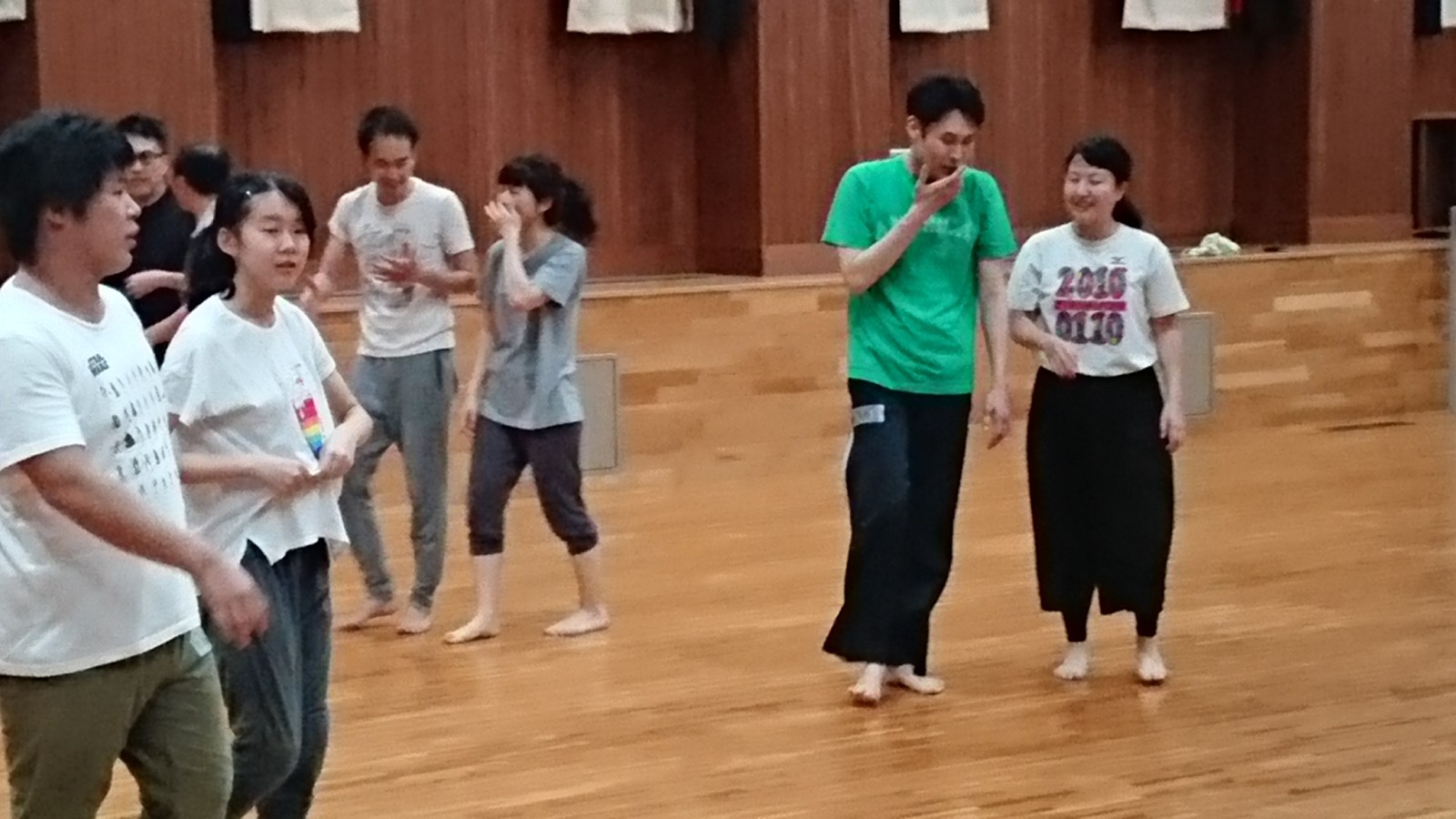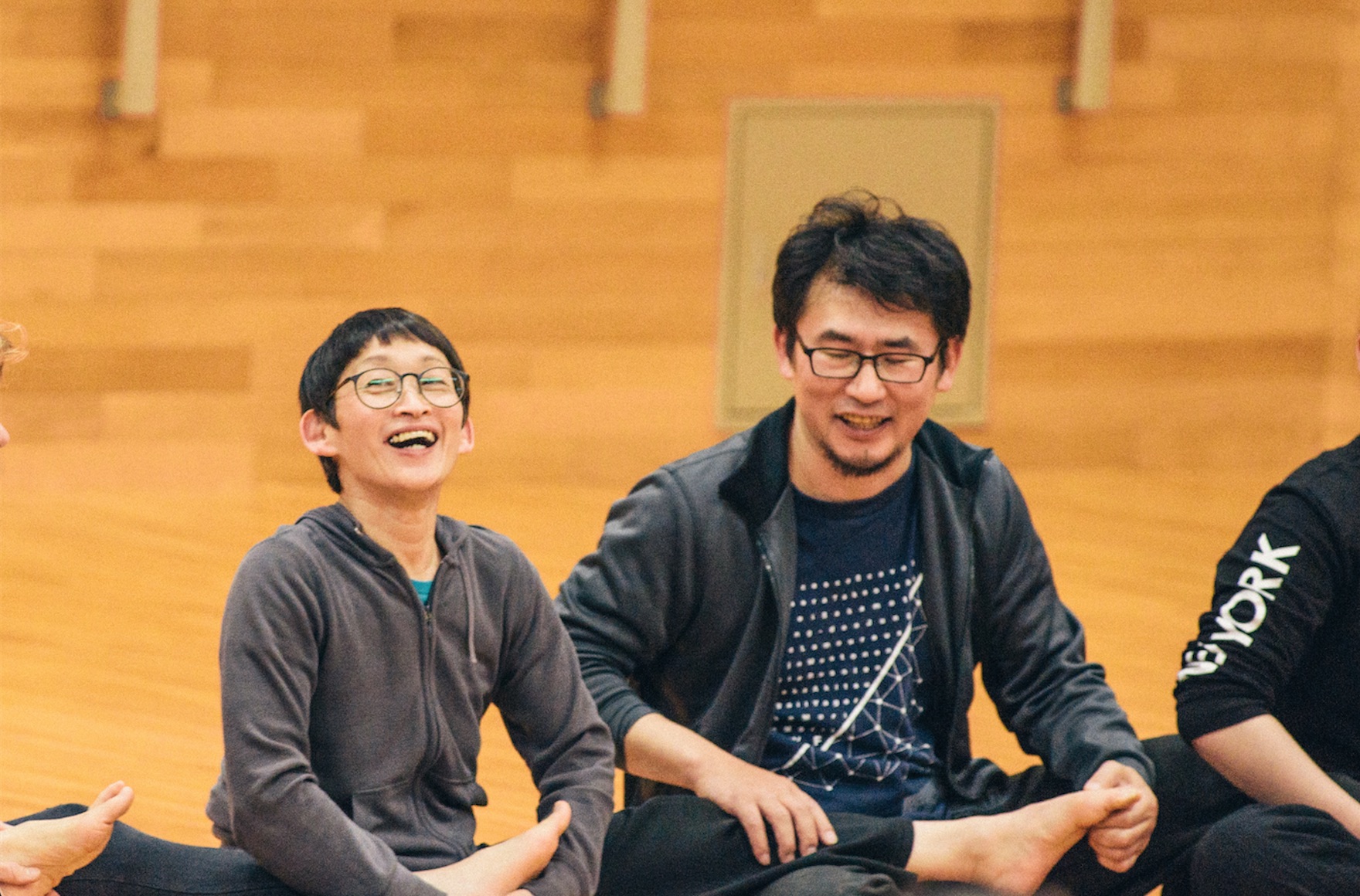【KIDF12】interview vol. 23 ABIGAIL YAGER (revised version in english)
2012年07月26日
interview:Tomiko Nakayama
interpreation, reduction, photo:Yoshitaro Akiyama
ABIGAIL YAGER (Taiwan/ Taipei)
Abigail Yager was a member of the Trisha Brown Company from 1995–2002 during which time she also served as Ms. Brown’s musical assistant. As a reconstructor of Ms. Brown’s work, she has worked with the Lyon Opera Ballet, at La Monnaie National Opera of Belgium, Le Festival International d’Art Lyrique, and has directed projects at the Taipei National University of the Arts, The Theatre Academy Helsinki, The Five College Dance Department, The Ohio State University, the American Dance Festival and at P.A.R.T.S. Ms. Yager has taught at universities, festivals, and studios worldwide, including the Korean National University of the Arts, Le Centre Choréographique National de Rennes et de Bretagne, and the Irish World Academy of Music and Dance. She was a Visiting Associate Professor at The Ohio State University from 2006-2010 and has been a member of the faculty at the American Dance Festival since 2003. Ms. Yager holds a B.A. in Compositional Studies: Theory and Practice from Mount Holyoke College and a M.F.A in Dance from Hollins University/American Dance Festival. (from the website of KIDF2012)
Nakayama:
This time, in your class, I experienced `cube exercise`. I was really impressed by the idea which is that we can move or countermove more smoothly by assuming `cube` in space. But according to my experience through this course and also my former work which was related with architecture, I think we Japanese are lacking in geometric sense compared with westerners. What do you think?
Yager:
There is a lot in what you say. It’s great. You mentioned the cube and geometry, you also said movement and countermovement, and you talked about architecture, and also compared Westerners to Japanese. These layers are all related.
You are right – my focus in class is on movement, pathways of movement. The cube is a way of organizing how we perceive movement instead of limiting it. To give proper credit, I should mention that the cube exercise was inspired by a dance of Trisha Brown’s entitled, Locus. Trisha made Locus in 1975, by assigning letters to each of the 27 points of a cube then using her body to “write” sentences as she gestured to points of the cube. The exercise we did in class was not Trisha’s Locus, but borrowed this idea to help students to frame the way they see movement in terms of its relationship to space. It is similar in this way to any exercise based on the Laban Cube that orients movement in relation to geometrically defined space.
I like to begin workshops with exercises like these because I feel it is important to heighten students’ awareness of this relationship from the onset, so that they are focused on how they perceive movement as a starting point.
N:
So how do you see it?
Y:
My experience of Trisha’s movement, both from inside and out, was like mathematics or architecture, moving architecture. And because this is how I intuitively perceive movement, I felt immediately at home in her work. It made sense to me. I felt we were speaking the same language.
N:
Do you differentiate between inside and outside of the box?
Y:
You could. But you are not limited to the boundaries of the box. It’s just a way of giving references. So, it’s sort of like when you listen to a foreign language. At first, it just sounds like sound, indecipherable. Not only can’t you understand, you can’t even hear where one word ends and the next begins because you don’t know how to listen to it. But once you start to recognize the framework, then you can begin to hear the words distinctly even if you don’t yet understand their meaning. So it’s a way of locating, referencing, and defining movement so that it’s not just random anything…. Can I go back? Because it’s very interesting to me that you say you feel Japanese are not good at this. I’m not Japanese, so perhaps I have no right to say, but I don’t agree. I feel that I see examples of clear, simple geometry all around me in Japanese architecture and design. When it comes to movement, I feel that Human Beings, no matter which country they are from, have a very hard time being simple or geometrically clear in their bodies. I have a three-year-old daughter who is a beautiful mover. She comes to my classes or watches my husband’s rehearsals and follows what we are doing. She just moves beautifully, simply imitating what she sees. Two weeks ago, she said “mommy, teach me.” And so I started teaching her. And I could see her trying to study my movement… trying being the key element here because all of a sudden, once she became actively focused on trying master what she saw, her body became awkward, overthought. When she had been just watching and following playfully she found movement effortlessly. It was beautiful. But as soon as she tried to learn it from me, she stopped listening to herself. So I feel that this is what we are doing in class…trying to return to ourselves, to simple movement, and to what we instinctively understand through our physical encounter with the world. It’s like pouring a marble down a funnel. The marble makes a spiral descent as it gently wends its way towards and eventually through the mouth of the funnel. Its path, a geometric spiral is a function of the interaction between its mass, gravity, and the structure of the funnel. It is this interaction between structure and force, and the natural consequence of movement that results that I am interested in. It is quite straightforward, simple, but not easy at all.
The problem is that we get in our own way by imposing what we think something ought to be or look like rather than examining how it operates from inside. So let me come back to your question. I think that no matter where we are from, people have a hard time being simple and allowing movement to happen rather than forcing it.
N:
I personally think we Japanese accepted western ideas and rapidly got modernized after WWⅡ. And if contemporary dance is rooted in modern Western thought, we Japanese are lacking in as it were the foundation for contemporary dance which has been formed over time in the West, aren’t we? Doesn’t it matter?
Y:
Yes, I suppose that contemporary dance, as you are defining it, started in the West and many of its foundational ideas are rooted in Western thought. But perhaps we are now looking at something that is actually very, very old, and no, not necessarily Western. I think Japanese people are very good at seeing simplicity, geometry, clarity. I think of Japanese architecture as being the quintessential example of letting simplicity speak. So walking through Kyoto, one is mesmerized by the wooden grillwork on doors and windows of the houses, the raked sand of zen gardens which evoke the movement of water, decorative patterns which arise out of response to nature. In the West, historically, Ballet was performed in the royal courts to entertain the king. It is presentational, decorative, based on idealized bodies and illusion. And then in Germany, in the 1920’s and 1930’s there came a reaction to ballet and what they dubbed as a display of technical virtuosity. Dance became about the expression of emotion, and about the relationship between our humanity and the cosmos, which makes me think about the classics of ancient Greece. Then in the 1940’s, back in the States, Martha Graham turned audiences’ attention to Japan with her spare aesthetic drawing inspiration directly from Japanese art and her famous collaborations with Isamu Noguchi.
During the 1960’s, people in the West, not just in dance were becoming interested in eastern philosophies like Buddhism and Taoism, and began studying the marital arts that grew out of these philosophies like Tai Ji and others. This greatly influenced people’s way of moving. But it wasn’t only the movement forms that shaped what was going on in the dance world, but more importantly the philosophical ideas such as the practice of allowance, letting things be, and submission that changed our relationship to the world around us and literally redefined an aesthetic value system. Suddenly lack of ornamentation, understatement and simplicity were deemed beautiful. And that’s not to say that these are necessarily eastern or Asian values, because certainly each Asian culture is distinct and all Asian aesthetics are by no means spare. But the common thread is the relationship to Buddhist and Taoist ideas. It’s a meeting point. And what emerged in the dance scene in the States as result, were things like Yvonne Rainer’s NO Manifesto, Judson, and Contact Improvisation. Because New York was a hot bed for these new trends, Postmodern Dance came to be associated with the United States. But to say that contemporary dance is rooted in western ideas, new ideas, that it is exclusively western, I think is an oversimplification.
N:
I’m wondering why contemporary dance focuses on the floor. Is it a reaction to ballet which focuses on being free from gravity?
Y:
I think that it relates to gravity. I agree there is this divide. Ballet strives to create the illusion where women, in particular, are supposed to be light, not weighty, and certainly not strong. It’s a world where women float like fairies and men jump like heroes. But it’s a world of artifice. When I think of contemporary dance, I think of quite the opposite, where our mass, our connection to the ground and relationship to gravity is exposed and often foregrounded. Let’s pick one form in particular which I think will be a useful comparison. Contact Improvisation explores the realm of possibility between two moving bodies that are in contact in conversation with the forces that dictate their movement – gravity, momentum and inertia. The intention is to harness these forces not defy them. Its similar to the way a glider harnesses the wind as opposed to a jet that uses engines to power its flight. And the amazing thing is that when you look at really skilled contact improvisers, it looks as if they could actually take flight!
N:
I learned the method called “release out” in your class. But I’m not still sure how I can become aware of our body softened or strengthened?
Y:
When you mention strength, it opens a huge question because we typically think of strengthening as muscular strength. And I’m asking you to do sort of the opposite which is to let the muscles especially the outer, bigger, bulkier muscles soften into release because as soon as they do, they allow the bones to move away from each other and the joints to open and the structure to find support from movement through space. Like a clothesline, where the string itself is not strong, when you move its end points away from each other in two opposite directions, the movement creates a line that is both strong and resilient, and can support the weight of heavy clothing. So to me I think of strength as being mobile and resilient, flexible, and primarily about efficient alignment…alignment as relationship, not place, but pathway.
So if we think of a city with roads and traffic, the alignment is not the road but it’s the traffic through the road.
N:
You used to work as the music assistant for Trisha Brown Dance Company, right? But this time, in your class, we haven’t worked with music, so far. Why is it?
Y:
Sometimes, I teach with music. I feel that when we move with music, we feel more comfortable. And I think that it’s very important that we feel comfortable, light in our expectation of ourselves and easeful so that we find that three-year-old person inside, like my daughter, who knows instinctively how to move. But I feel that when we are dancing with music, because so much of our attention goes out of the body to the music, we lose awareness of our physicality.
N:
I agree.
Y:
Sometimes that’s important because if you think too much you get in your way. But there needs to be space and time in the class for you to focus on your body. It’s very much like learning to drive a car. When you begin, you have to actively think, “here, I need to shift into third gear, and when I turn the corner shift down into second gear…” And you wonder, how you will ever come to do this safely and quickly. But with practice, it becomes second nature. You don’t have to think about it and then it’s really fun.
N:
Some critics say that now, in 21st century, everything has been already done in the art world. Do you think it’s true? And if it’s yes, what do you think the future of contemporary dance is like?
Y:
I personally feel that if a critic is looking at a work of art, no matter what medium, what discipline, and judging it based on whether it’s new and original, they are missing the boat. They are asking the wrong question. I am about to say something that might sound like I’m contradicting my self. On one hand, I think that nothing’s ever new. Everything is a response to the world around us. It’s not something generated out of nothing, but comes from looking and responding. And if I, as an artist, am worried about generating something new, about doing what has not yet been done before, I am pre-occupied with my own originality. I am essentially asking, “am I special?” I think that’s ego.
On the other hand, I believe that every person on this earth is innately unique and that every moment in time is new in relation to what has come before. So, if art is response to one’s environment at a particular moment in time, which I believe it is, then my response to this moment in time is going to be different from your response to this moment in time. In that way, every work of art is as unique as each individual person and moment in time, and is therefore by definition, new and different.
N:
It will be the last question. How has Trisha, who is a pioneer in the field of post modern dance, influenced you?
Y:
She has had an enormous influence on me. She taught me about being practical, setting up experiments and just like what were doing on the technical level in the body, not forcing things, but getting out of their way and seeing what happens. So when Trisha makes work she doesn’t sit and calculate something that she thinks will be pretty. Instead, she sets up experiments and then sees what will happen. Sometimes it felt as though she was putting us on the collision course with the impossible. “Just try it!”
she would say. And it wouldn’t matter if we succeeded in doing what we actually set out to do. Instead, our attempt might give birth to something entirely different from what we thought we were after. So, she was sort of mad scientist. And this process took us far beyond the limits of our imagination.
And she delighted in our mistakes.
Let me give you one more example. I am very honored to have the privilege of setting Trisha’s choreography on students or on other
professional companies. One of the projects I direct is called “Set and Reset/Reset” which uses Set and Reset, her landmark choreography from 1983, as a starting point. But rather that simply reconstructing the original choreography, instead, I work with the dancers to create a new version of the piece. This process has been profoundly instructive to me as a director because it has taught me to see through Trisha’s eyes and come to understand her very particular way of composing relationships between moving bodies in space… a way that is also perhaps shared by William Forsythe who has been very much influenced by Trisha. When he speaks about his work, there is similar sense of how the layers of movement, layers of bodies, hook in space and time. And that is the glue of choreography that is mobile and breathes, changes in time but is meticulously detailed and holds the choreography intact.
N:
The more we talked about this topic, the more philosophical it gets.
How dose your stay go, so far?
Y:
It has been absolutely wonderful. I’m not just being polite. I have loved teaching here, being here, meeting people whom I have met, the community that has been created by this festival, and I am so impressed by how Yuko and Kosei have thought through so many different aspects, layers to create something that feels dimensional, supportive, inquisitive, patient. I love the fact that I’m teaching a huge group of people, completely delightful because of who those people are. There is a huge range of skills in the room from beginner to advanced dancer. And it’s just a place for people to come and to investigate. So it’s just been delightful.
N:
So, next year, will you come back?
Y:
I hope so.
N+Y:
Thank you.
-
- ■2019.7.3
【暑い夏19】ダンス、まずその前に・・・ or そ... - 〈Dビギナークラス:ルイス・ガレー〉ワークショップ・レポート 4月30日(火)@京都芸術センター、フリースペース &nbs........
- ■2019.7.3
-
- ■2019.7.3
【暑い夏19】動きに出会う... - 〈C-3:ホラシオ・マクアクア〉 〈Dビギナー:ホラシオ・マクアクア〉 参加日2019年4月27日〜5月4日 私は、1........
- ■2019.7.3
-
- ■2018.7.9
【暑い夏18】存在することと存在しないこと... - 〈C-3:川口隆夫〉ワークショップレポート 参加日4/27〜5/6 「舞踏作品を完コピするんだ」と思いながら、川口さんクラ........
- ■2018.7.9
-
- ■2018.7.9
【暑い夏18】2018年のチョンさんクラスを覗いた... - 〈C-1:チョン・ヨンドゥ〉見学&インタビュー 見学日5/5 チョンさんのクラスに見学に伺ったのは、ショーイングが予定され........
- ■2018.7.9
-
- ■2018.6.28
【暑い夏18】ダンスを見る目に見えないダンス... - 〈B-2:長内裕美〉ワークショップレポート ● 導入のインパクト 「はい。一分間笑います。」カモシカのよ........
- ■2018.6.28
-
- ■2018.6.27
【暑い夏18】静から動へ 内側から外側へ... - 〈A-1:カティア・ムストネン〉ワークショップレポート 取材日:4/27, 5/1•5 私はダンスの素人である。ダン........
- ■2018.6.27
-
- ■2018.6.27
【暑い夏18】鏡を通して新しい自分に出会う --今... - 〈こどもとおとな:秋津さやか〉ワークショップレポート(取材日4/21) 「こどもの集中力を高めるため、レッスン........
- ■2018.6.27
-
- ■2018.6.27
【暑い夏18】“考えすぎると動けなくなる”につけ... - 〈ビギナークラス/アビゲイル・イェーガー(1)〉ワークショップレポート 4/28 京都芸術センターフリースペ........
- ■2018.6.27
-
- ■2018.6.27
【暑い夏18】安心感と楽しさ……笑顔あふれるカティ... - 〈ビギナークラス/カティア・ムストネン〉ワークショップレポート 4/29 京都芸術センターフリースペース &nb........
- ■2018.6.27
-
- ■2018.6.27
【暑い夏18】進化するように対話する—— はじめに... - 〈ビギナークラス/坂本公成・森裕子〉ワークショップレポート 4/27 京都芸術センターフリースペース 「........
- ■2018.6.27

